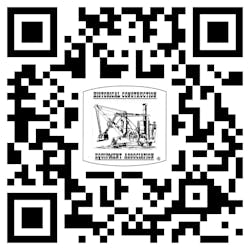Senior editor Frank Raczon recently analyzed trends in compactors, so let’s take a historical look at one of the most basic of all: the sheepsfoot roller.
The sheepsfoot takes its name from the “technology” it emulated: the original compaction practice of driving a herd of sheep or other stock along the fill. Their hooves would penetrate and consolidate the material. The roller’s feet, arrayed around the drum, work in the same fashion as all those hooves.
There have been several variations of the idea over the decades, including capped feet for less penetration; spikes for breaking rocky material; and flat-tipped wedges. Another variant is Hyster Co.’s “grid” roller, which instead of a spiked drum used a pair of drums constructed of 1½-inch steel bars on 5-inch centers, creating a 3½-inch grid for crushing and compaction.
Other developments saw rollers yoked to rubber-tired prime movers and drums fitted over tires on modified wheel tractors. Buffalo-Springfield’s Kompactor segment-wheel roller was the first known self-propelled, integral embankment compactor, but sheepsfoot and wedgefoot-type drums became the standard for these machines. The further development of these machines into specialized landfill compactors is a story for another time.
About HCEA
The Historical Construction Equipment Association (HCEA) is a 501(c)3 nonprofit organization dedicated to preserving the history of the construction, dredging and surface mining equipment industries. With over 3,500 members in a dozen countries, our activities include operation of National Construction Equipment Museum and archives in Bowling Green, Ohio; publication of a quarterly magazine, Equipment Echoes, from which this text is adapted, and hosting an annual working exhibition of restored construction equipment. Individual annual memberships are $45 within the U.S. and Canada, and $65 elsewhere. Our next International Convention and Old Equipment Exposition will be September 18-20, 2025, at our Museum. We seek to develop relationships in the equipment manufacturing industry, and we offer a college scholarship for engineering students. Information is available at www.hcea.net, or by calling 419.352.5616 or e-mailing [email protected].
Scan the QR code for information on joining.
About the Author
Tom Berry
Tom Berry is archivist for the Historical Construction Equipment Association (HCEA). Information is available at www.hcea. net, or by calling 419.352.5616 or e-mailing [email protected].
